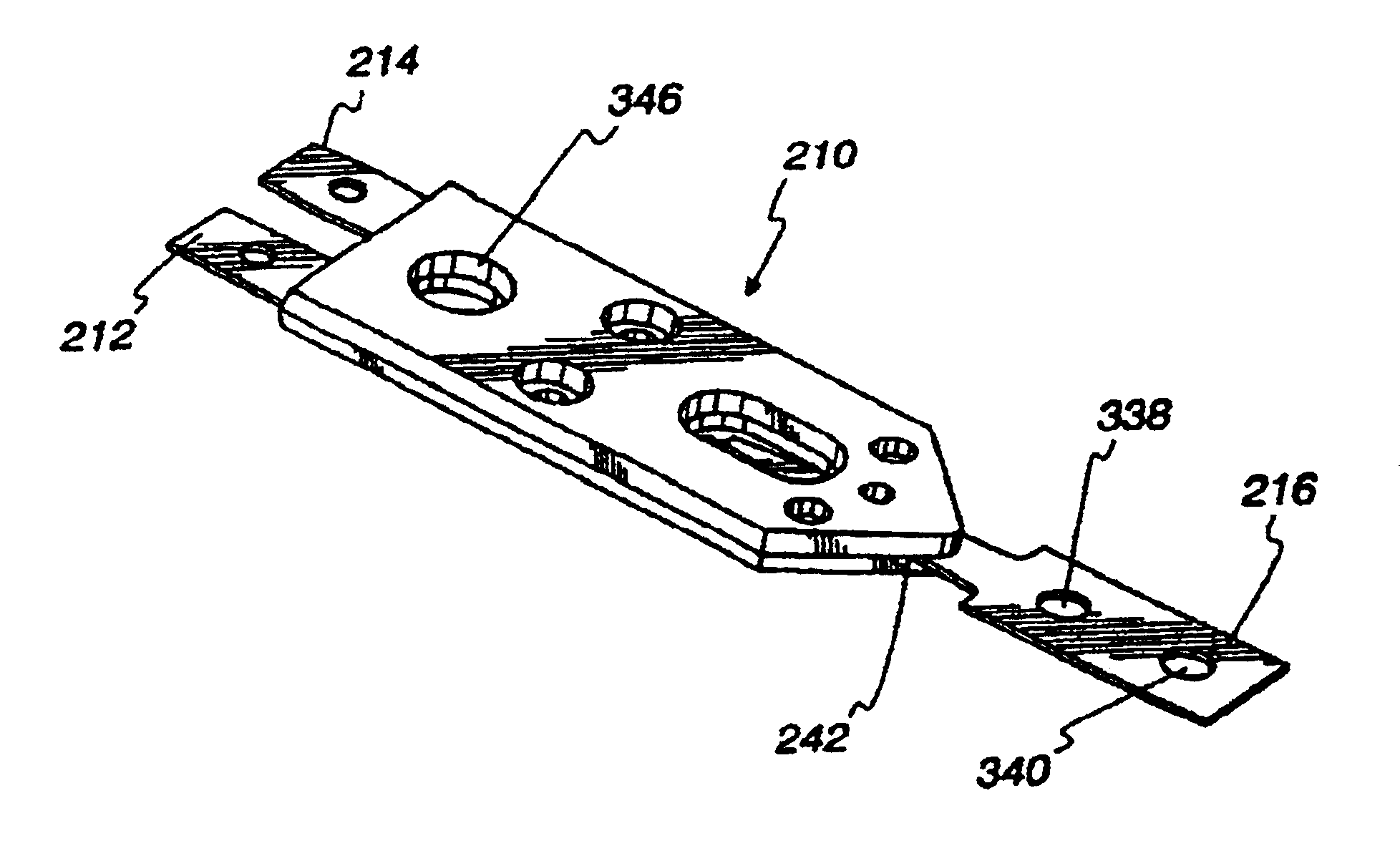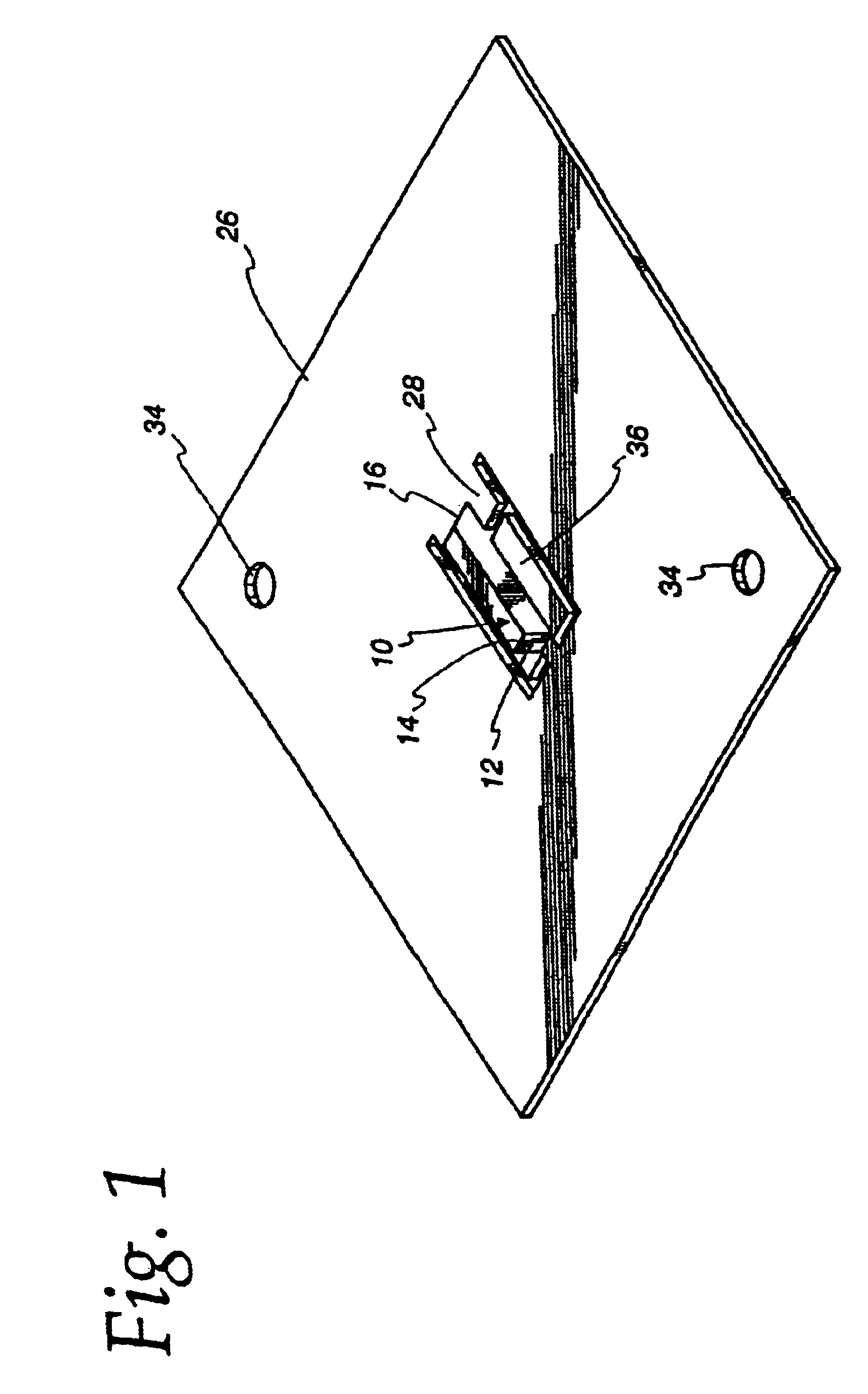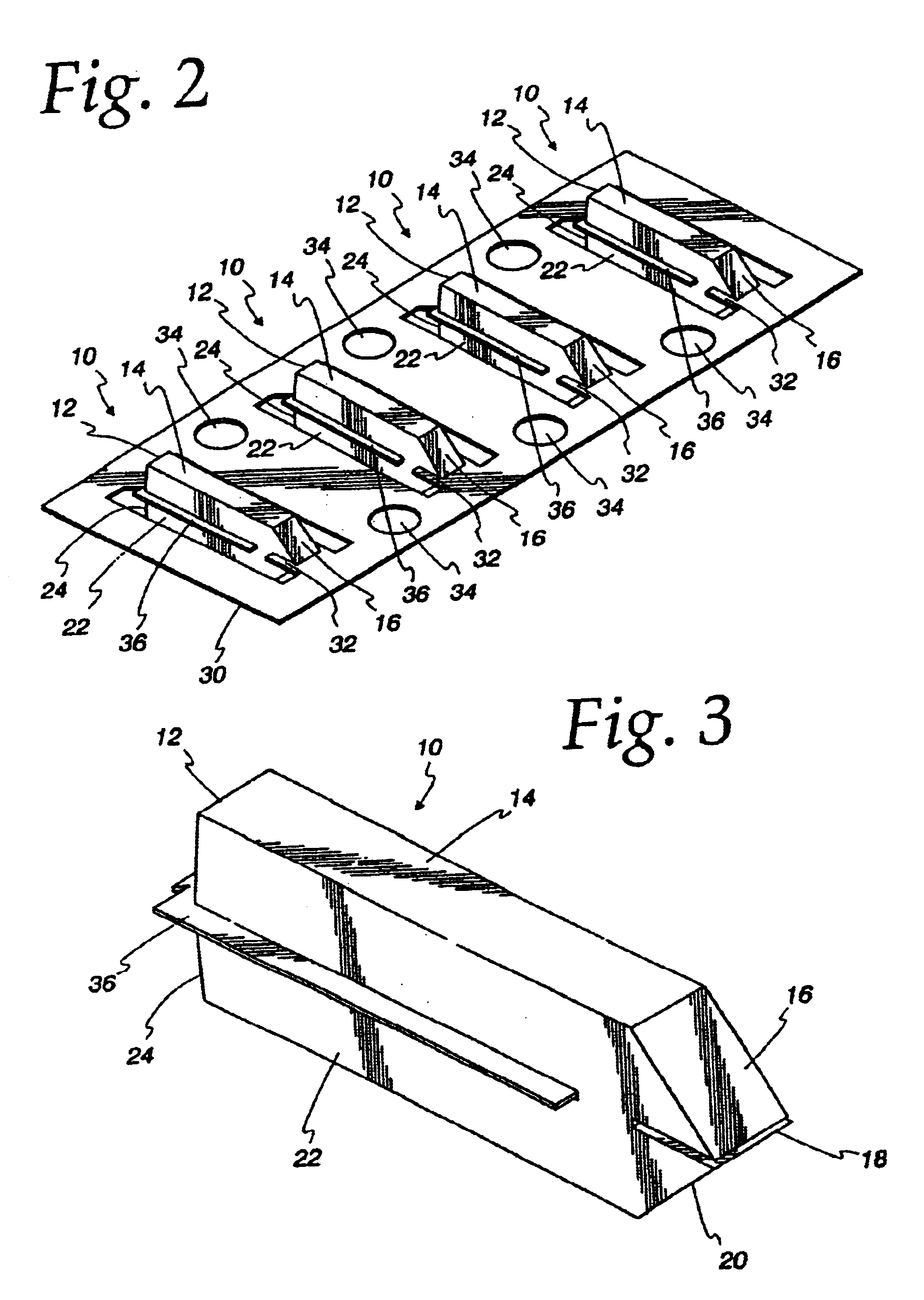Electrochemical sensor
a technology of electrochemical sensors and capillaries, applied in the direction of diaphragms, packaged goods, immobilised enzymes, etc., can solve the problems of difficult to attach lids and control the path length, difficulty in repeatedly producing cavities of precise depth, and production of precision optical path lengths
- Summary
- Abstract
- Description
- Claims
- Application Information
AI Technical Summary
Problems solved by technology
Method used
Image
Examples
Embodiment Construction
[0027]Referring to FIGS. 1-4, the sensor format 10 of the present invention is illustrated. The format 10 is an optical pipe formed of light transmission material. A light source is applied to an end 12 of a first leg 14 of the format 10. Light from the light source travels the length of the first leg 14 until it strikes a first end surface 16 that is at a 45° angle to the longitudinal axis of the first leg 14. The light is reflected by the end surface 16 through a capillary gap 18. Light that is not absorbed by material in the gap 18 strikes a second end surface 20 which is at a 45° to a longitudinal axis of a second leg 22 of the format 10. This light is reflected the length of the second leg 22 to a detector positioned at an end 24 of the second leg 22.
[0028]The format 10 is used in the transmission mode and the path length in the gap 18 is directly proportional to an analyte being tested. If the same analyte is measured in two different formats that have different path lengths, ...
PUM
| Property | Measurement | Unit |
|---|---|---|
| height | aaaaa | aaaaa |
| melt temperature | aaaaa | aaaaa |
| electric current | aaaaa | aaaaa |
Abstract
Description
Claims
Application Information
 Login to View More
Login to View More - R&D
- Intellectual Property
- Life Sciences
- Materials
- Tech Scout
- Unparalleled Data Quality
- Higher Quality Content
- 60% Fewer Hallucinations
Browse by: Latest US Patents, China's latest patents, Technical Efficacy Thesaurus, Application Domain, Technology Topic, Popular Technical Reports.
© 2025 PatSnap. All rights reserved.Legal|Privacy policy|Modern Slavery Act Transparency Statement|Sitemap|About US| Contact US: help@patsnap.com



